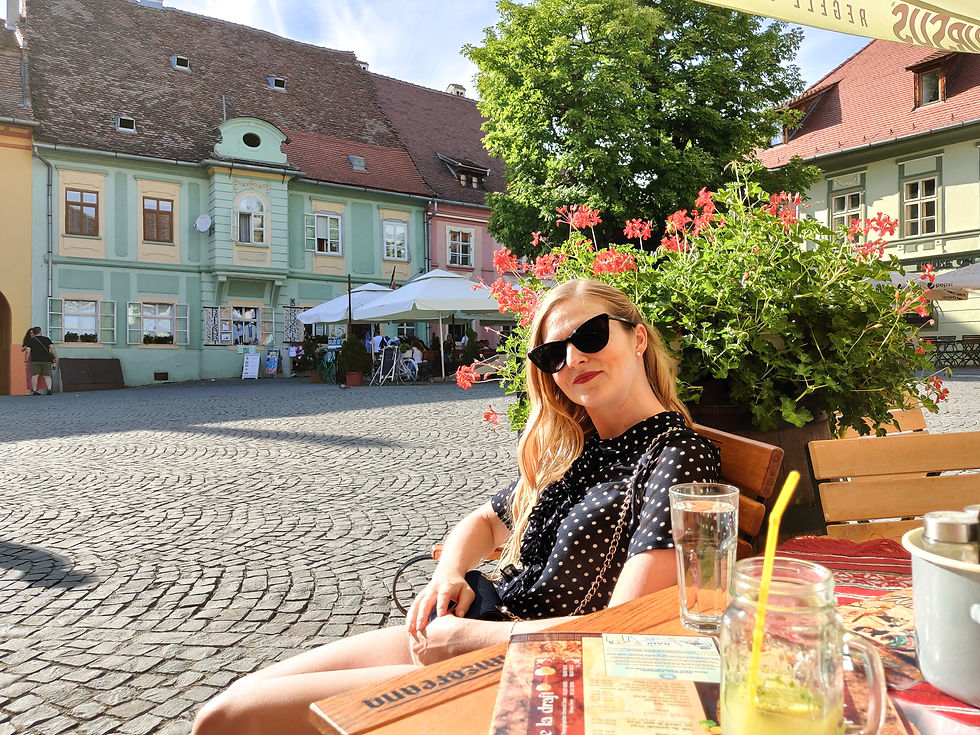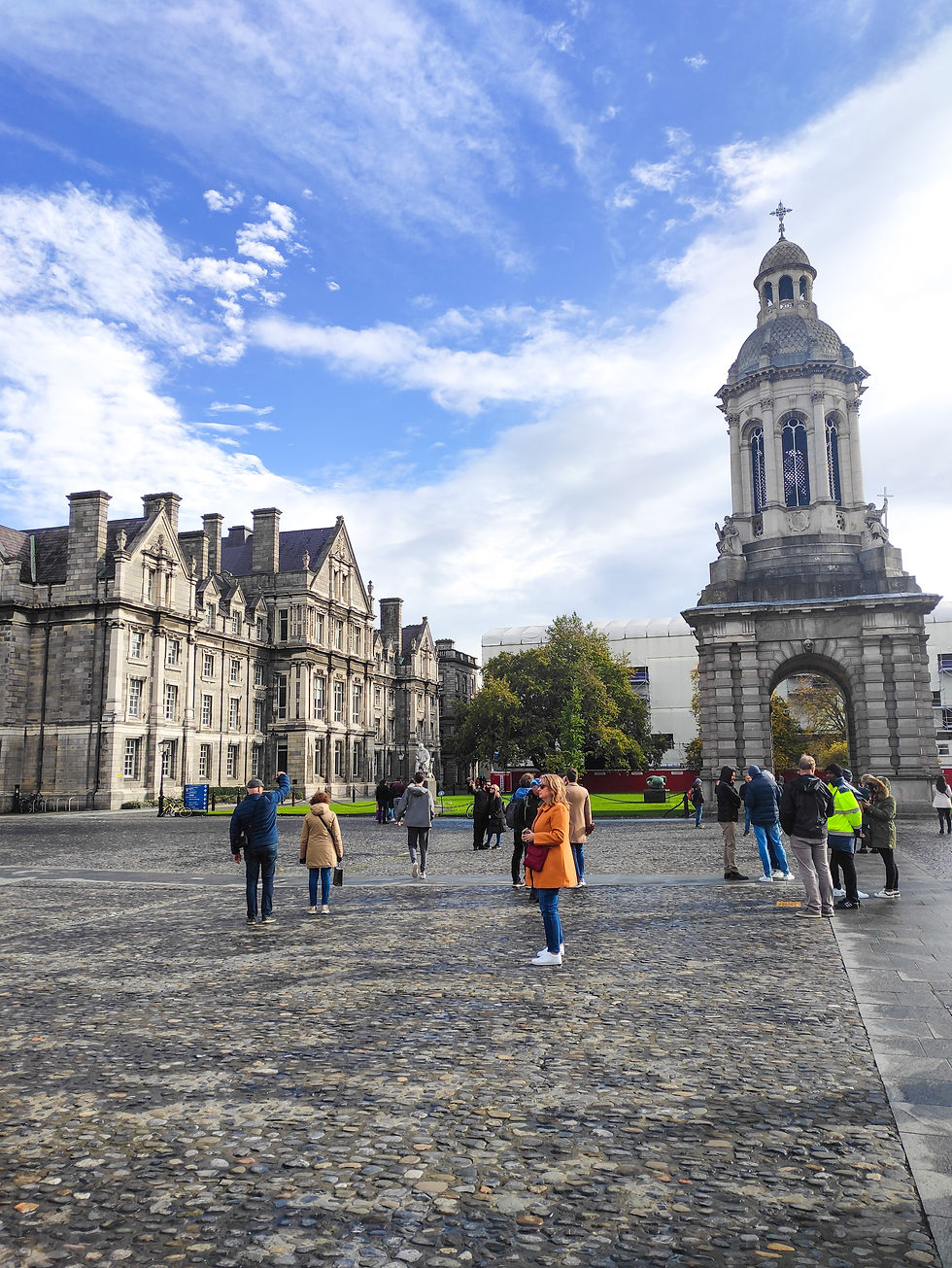Top 10 Things to do in Sighisoara
- Marissa Matthiesen
- 9. nov. 2023
- 6 min læsning
Sighisoara is a historical dream destination and one of the most picturesque towns in whole Transylvania. The city is first and foremost known for its well-preserved walled old town which is even listed by UNESCO as a World Heritage Site. Adding with the fact that it is equally one of the few remaining citadels in the world still inhabited. The city is rather small and besides the citadel itself there is little to see in Sighisoara. However, it makes for a great base to explore the surroundings which host plenty of castles and fortresses. I compiled a list of the top 10 things to do in Sighisoara which should keep you occupied for a couple of days in this city.

1. Historic Centre
The city was founded by German craftsmen and merchants, also known as the Saxon’s, who built this small fortified, medieval town in the 12th century. Strategically placed on a hill, the city would protect its citizens against Tartars and other threats from the East. Everything inside the citadel is a historical dream. When I first entered the citadel through one of the original city gates late that evening it was like stepping into the past. You can enter the city several places – in the West at the Tailor’s Tower, the East at the Clock Tower or the South-West at the Furrier’s Tower. That evening, everything was quiet and peaceful. However, the situation quickly changed the day after when stepping outside our hotel door and started walking around in the historic centre where more tourists would appear throughout the day. The historic centre is made up of tiny, cobbly streets where you easily can spend the day just wandering around, admiring the pastel-painted buildings lined up next to each other.

2. Citadel Square
The Citadel Square is definitely a place in the town which you cannot miss. Located in the very heart of the citadel lies this beautiful square surrounded by equally gorgeous historical buildings. Notice the funny detail on one of the corner houses with the antlers of a deer sticking out and the rest of the body being painted on the building. What today is a peaceful square where the medieval festival and other events are held, used to be the place where important activities throughout the medieval age took place such as trials, executions, performances and trades alike. But what remains the same is that this magical place is still being the centre of the activities. The square is the perfect place to relax in one of the cafés whilst you can admire the colourful houses which despite of their different colours impress as a perfect harmony.

3. Clock Tower
The Clock Tower makes as one of the entrances to the citadel and is the main attractions as well – this is the connection to the Lower Town and often described as the main entry point. The fortification system originally comprised of 14 towers of which 9 still exist; the Clock Tower is the one that dominates as the master tower and stands splendidly as a landmark for the citadel which can be seen from most corners of the city with its 64 meters of height. The original purpose of this impressive tower was to defend the main gate of the citadel. The tower was built in the 14th century comprising of the ground floor and additional two floors. When the roof was demolished the construction of the tower was extended with additional two levels. Due to a fire in 1676 the roof of the tower was demolished, and the original shape remains therefore unknown. I can highly recommend climbing the tower and visiting the history museum inside.

4. The Towers
The citadel’s fortification system originally comprised of 14 towers of which 9 still exist – The renowned Clock Tower, the Tanner’s Tower, the Tinsmith’s Tower, the Roper’s Tower, the Butcher’s Tower, the Furrier’s Tower, the Tailor’s Tower, the Bootmaker’s Tower and the Ironsmith’s Tower. The 14 original towers were dedicated to the city’s 14 guilds who would man and maintain each their own tower. Having 9 out of 14 towers still exist is such an amazing sight to witness with centuries of history standing impressively. The most impressive one is undoubtedly the giant Clock Tower. From here on clockwise comes the Tanner’s Tower which though is inaccessible. Next comes the Tinsmith’s Tower which, too, is inaccessible. The Ropemaker’s tower is especially interesting to visit since this is the only tower inhabited. Can you imagine living in such a historically important building? The Butcher’s Tower stands closely to one of the entrances, right next to the Furrier’s Tower. The next most impressive tower is the Tailor’s Tower which makes as the second largest entry to the city. Since being an entry point, this tower has two broad openings in the bottom. The second last tower is the Bootmaker’s Tower with an interestingly interior content, a radio station. The last tower before returning to the Clock Tower is the Ironsmith’s Tower which can be entered where you might see some kind of exhibition.

5. Scholar’s Stairway
Sighisoara is full of interesting, historical discoveries, such as the Scholar’s Stairway which is a unique survivor from 1642. The stairway is a covered path connecting the lower and the upper parts of the citadel. With the original intent being to allow pupils and churchgoers the access to the buildings on the hill during wintertime, which otherwise was hard to access due to problems caused by the snow or other weather conditions. The original stairway consisted of 300 steps of which only some more than half remain after some adjustments during the 19th century. Following the street from the citadel square will lead you directly to the stairs. In case you are planning to visit the Church on the Hill, you might as well take the stairs. During hot summer days, the stairs give a nice shade as you ascend the hill.

6. Church on the Hill
Crowning on top of the hill, stands another legendary landmark of Sighisoara – the Church on the Hill. Standing at an altitude of 429 meters on top of the hill, the church visibly dominates with its massive structure. The church can be reached by climbing the Scholar’s Stairway or from the road leading to either the school or the Lutheran cemetery, which is another unique and peaceful site to visit. From the outside the church is characterized by a rather simple appearance which isn’t unusual for Saxons churches since they were fortified and hence couldn’t afford rich ornamentation of the exterior. Having a program filled with many great attractions made us skip to visit the churches interior. However, with an entrance fee of 10 RON, you can visit the magnificent, gothic interior and as I heard, even the catacombs of the church.

7. History Museum
Several of the old towers host a variety of exhibitions ranging from art to history; some even host stores selling craftmanship’s goods from the original guild. The renowned Clock Tower is one of those towers hosting a museum – the History Musem which is equally the largest museum in Sighisoara. My absolute priority when visiting a new city is to dive into its history. After all, it is the events throughout the past which have shaped the present including everything surrounding us – the buildings, food and culture in general. The History Museum of Sighisoara is a wonderful museum including historical furniture, tools, jewellery and much more. The museum was founded by Dr. Joseph Bacon in 1899 of whom you will find a statue inside the museum. Not only does the Clock Tower host a museum, if you climb to the very top of it, you will reach the observation platform from where you will have the most magnificent view of the entire city.

8. St. Joseph’s Roman Catholic Church
We stayed at a hotel inside the very citadel, really just a few meters away from the St. Joseph’s Roman Catholic Church. Unlike the other two biggest churches in Sighisoara, which were built by Saxons, this church was built by Hungarians who had a different approach to architecture. The architecture of the church follows an eclectic style with both neo-Gothic and Neo-Roman elements. The church stands near the enclosure wall on the site which originally hosted the Franciscan monastery and the Locksmiths tower. However, both of them were demolished and between 1894 and 1896 this church was built instead.

9. The Dracula Investigation
Sighisoara is the birthplace of the infamous Vlad Tepes, also known as Vlad “The Impaler” for his brutality against his enemies or Vlad Dracula, the historical character who inspired Bram Stoker’s book “Dracula”. Vlad Tepes was born in Sighisoara supposedly in 1431 to a father who was already the ruler of Wallachia at that point in history. The Dracula Investigation will take you through the life of Vlad Tepes, starting with the time where he was born, taking you through his childhood and all the way to the bitter end of his death, told in an animated and lively way with different effects. This exhibition is a great way to experience and learn about the history, accurately told to understand the complex and often misunderstood character of Vlad Tepes.

10. Torture Chamber
The city hosts many small museums and exhibitions, one of them being the Torture Museum/Chamber. The Torture Chamber used to be a prison cell where prisoners were tortured to extort confessions during medieval times. This old prison cell has since been transformed into a small one-room museum, which is located at the foot of the Clock Tower.
Even though being just a small room with a selection of historical torture instruments, it makes you realize the degree of cruelty from the past to its fullest.






Kommentarer